Excerpt:
Here are 2 artificial ecosystems sharing a light source
Access to this light source is granted through a market
Each colony of photosynthetic bacterias can claim access to light thanks to credits earned for their oxygen production.
The rules driving the market are optimized through a genetic algorithm
This artificial intelligence is testing different populations of financial systems on these 2 sets of Cyanobacteria.
Like so, the photosynthetic cells and the computer are experimenting with different political systems granting access to this resource.
The system oscillates between collaborative and competitive states.
The genetic algorithm pictures the rules of these proto-societies as genes
By breeding populations of societies, new generations of markets arise.
Like so, the sum of microscopic series of events determines the status of the system at a macroscopic scale.
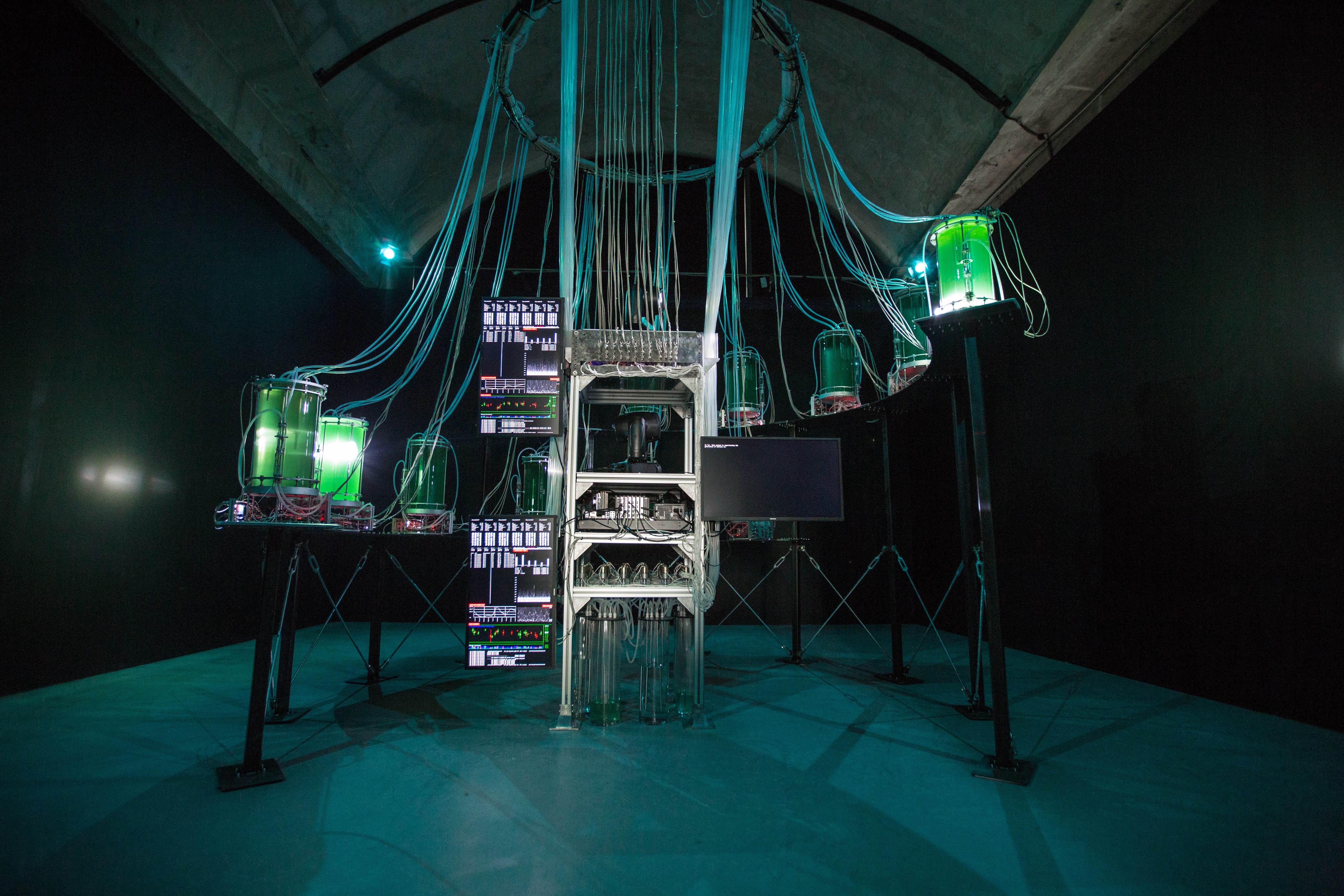

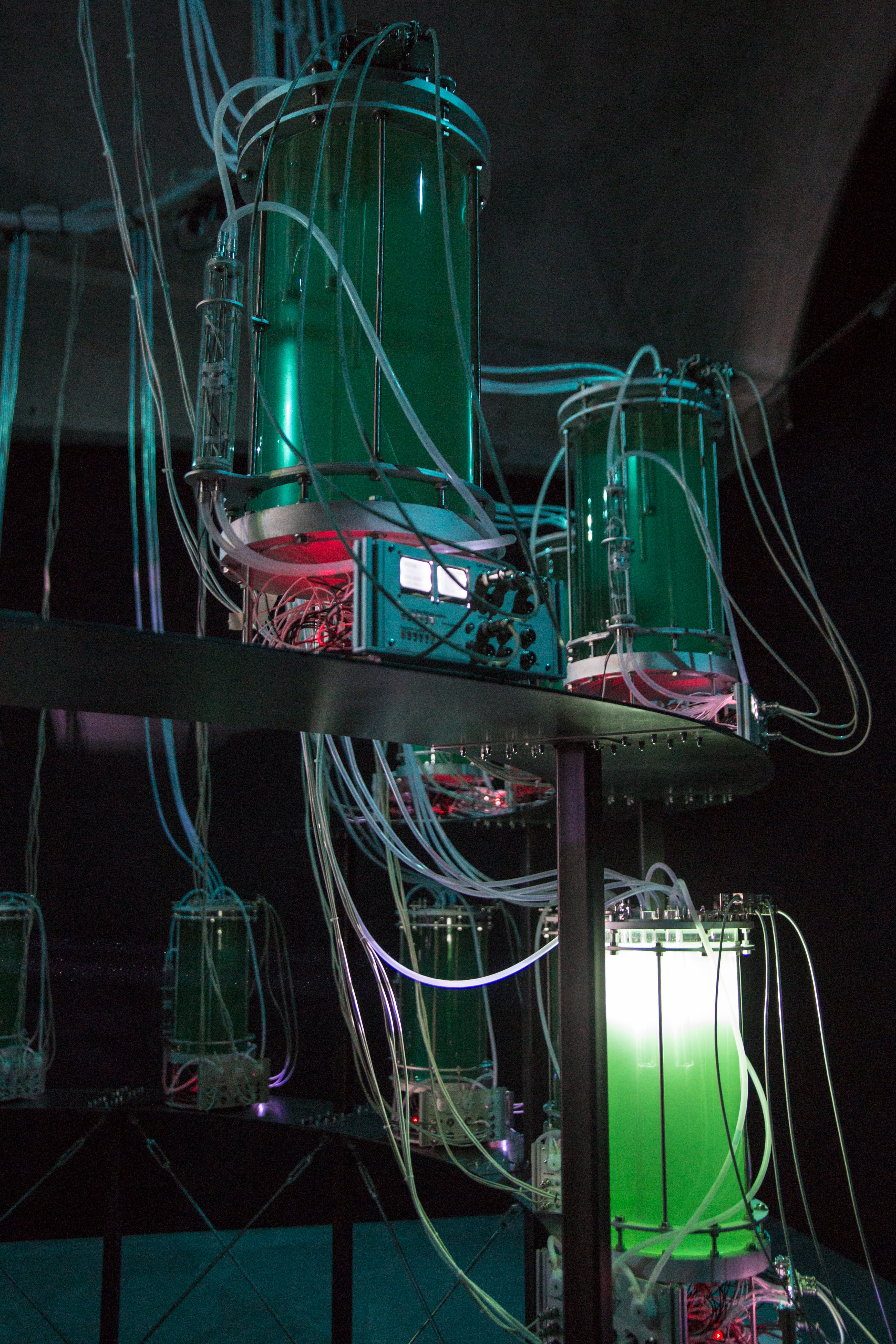

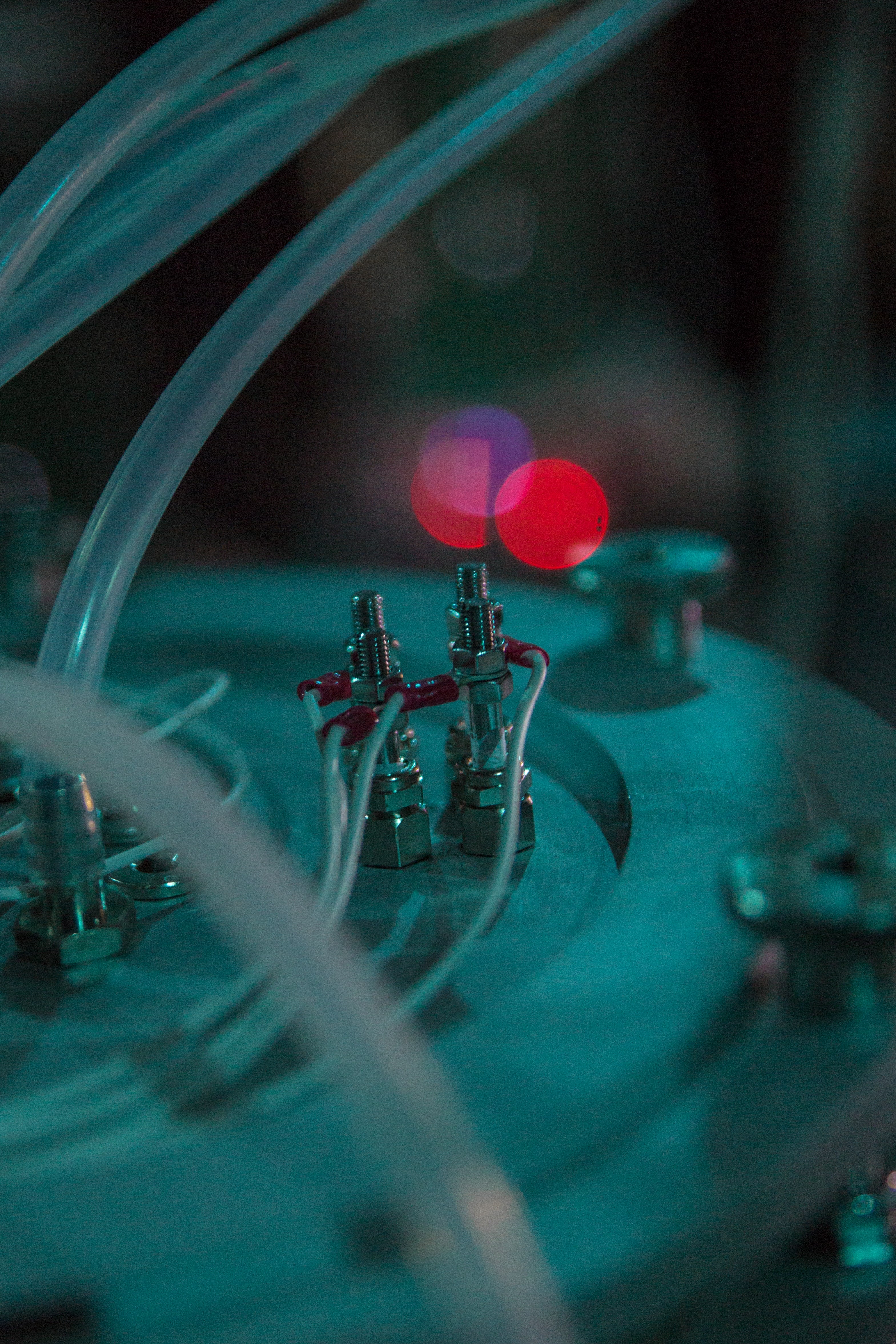
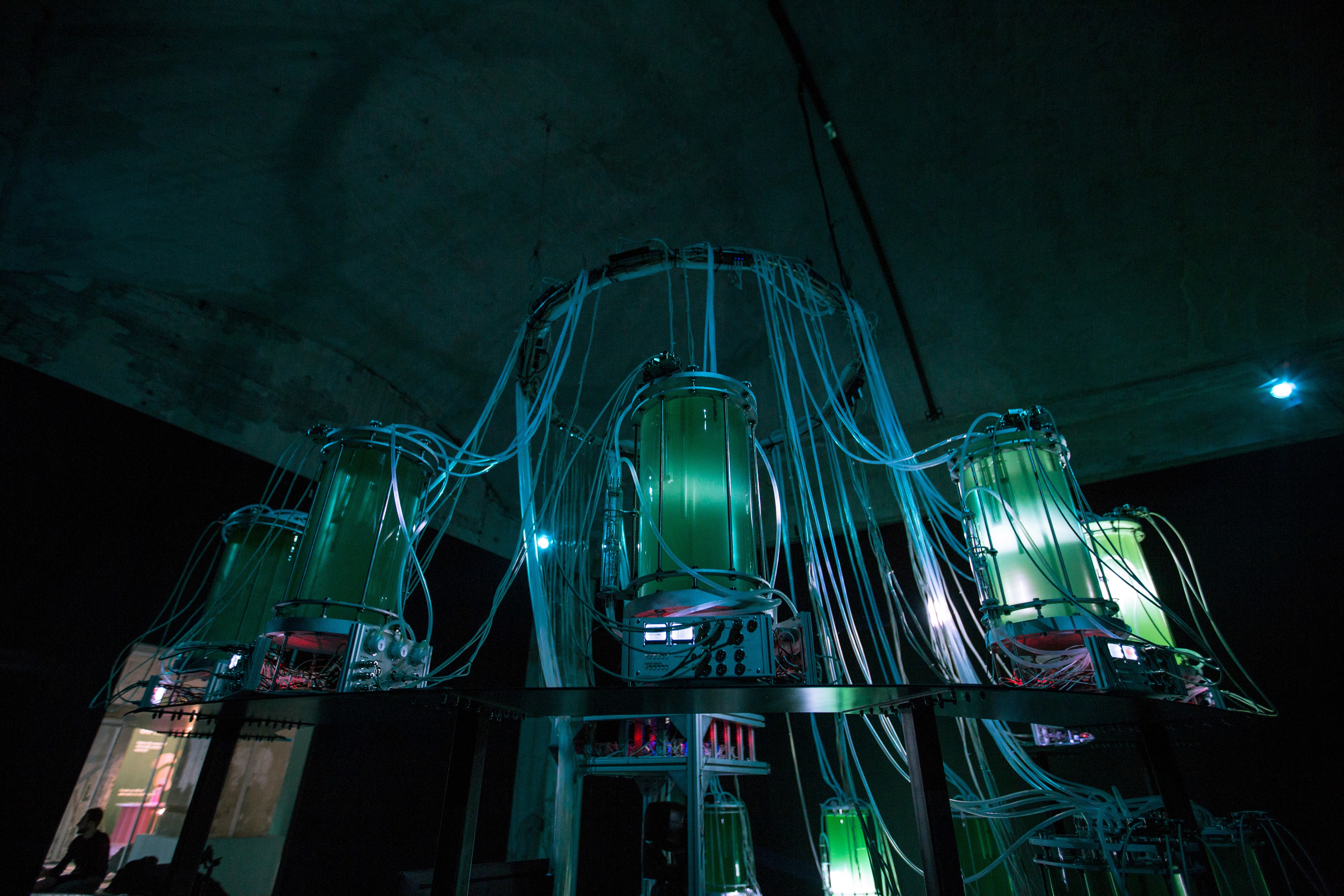
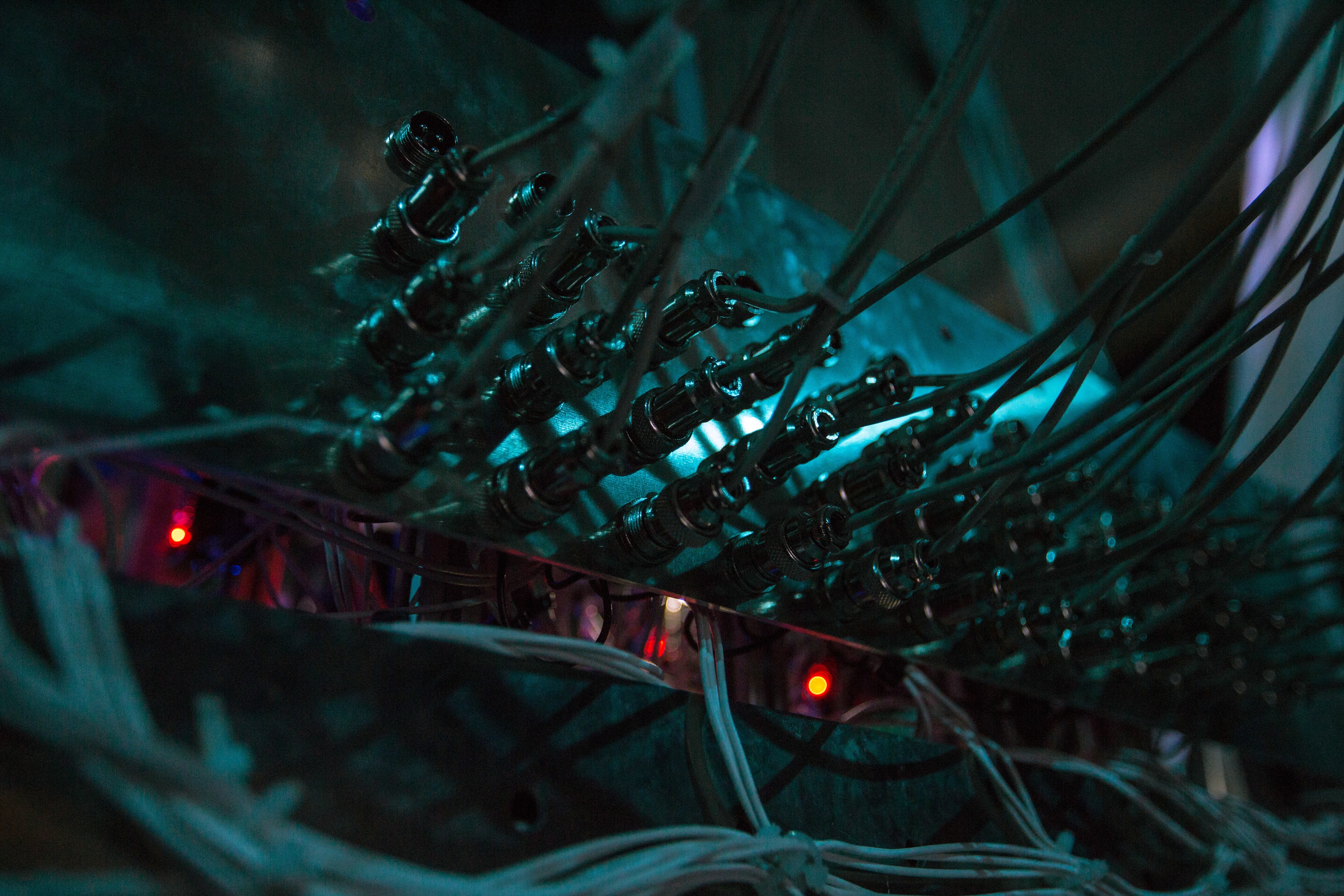

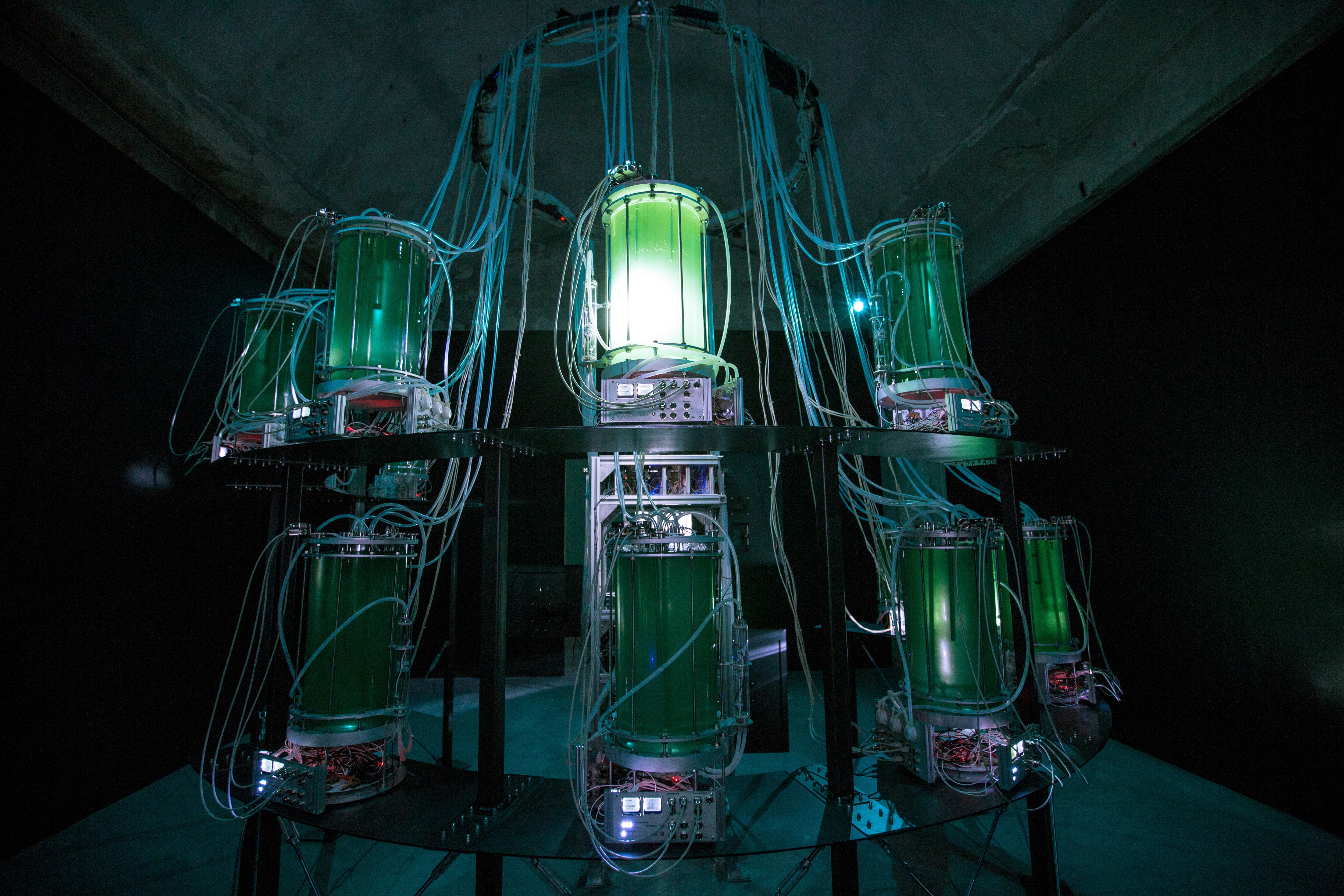
If one would like to go away from the Cartesian mind-body(machine) dichotomy when perceiving Humans and toward a more universalizable vision of lifeforms where bodies are solely a permeable boundary between semi-closed ecosystems hosting billions of individuals with their own will and interest, together forming the emergent nature of the self, then, such a vision should be transposable to the analysis of a software/hardware stack. Hence, an evolutionary design paradigm for machines and systems will look at scales going from micro-transistors to planet-size computation network infrastructures. Such an analysis requires a thorough investigation of the socio-techno-industrial-political apparatus on which the manufacturing and the exploitation of the parts rely on.
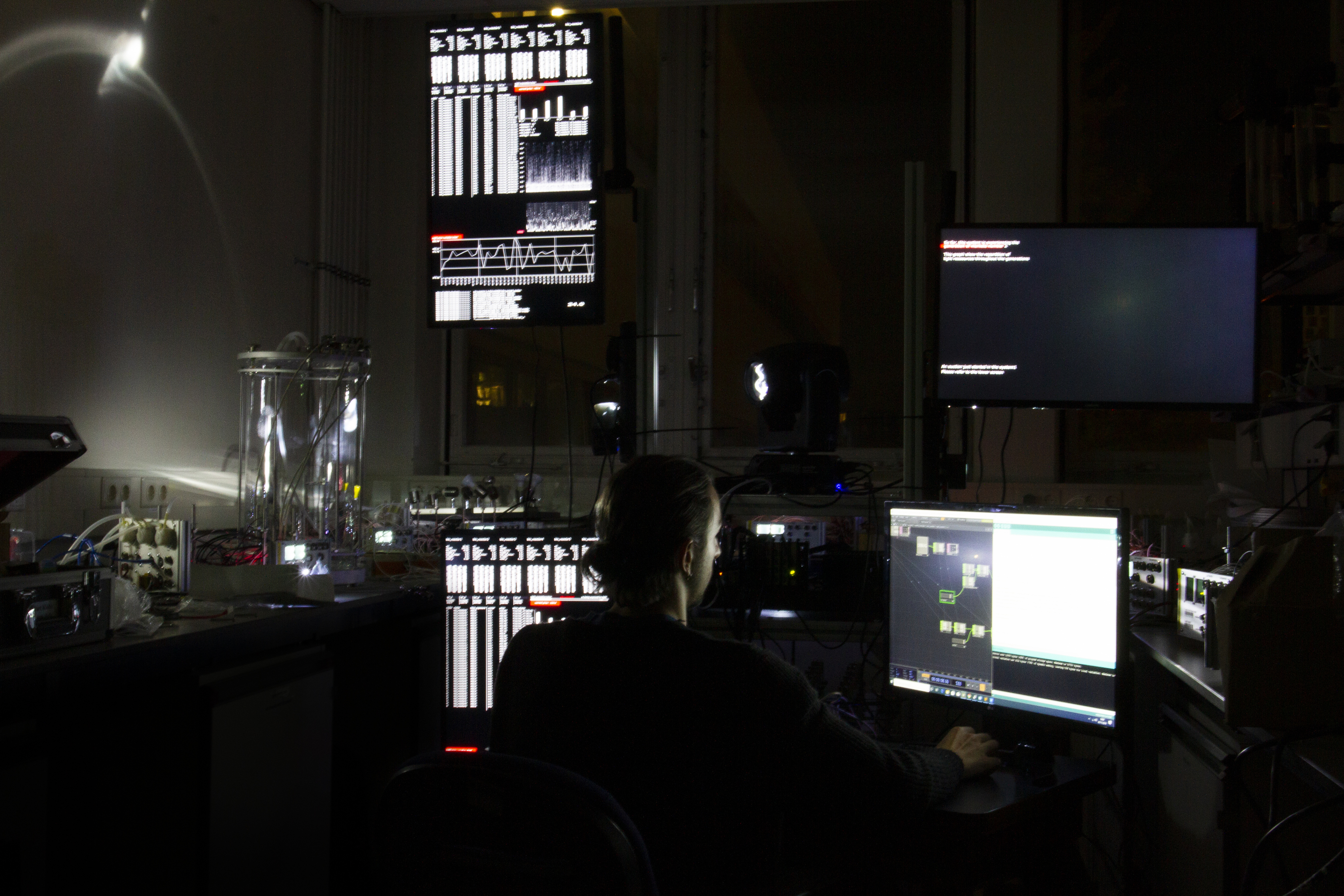

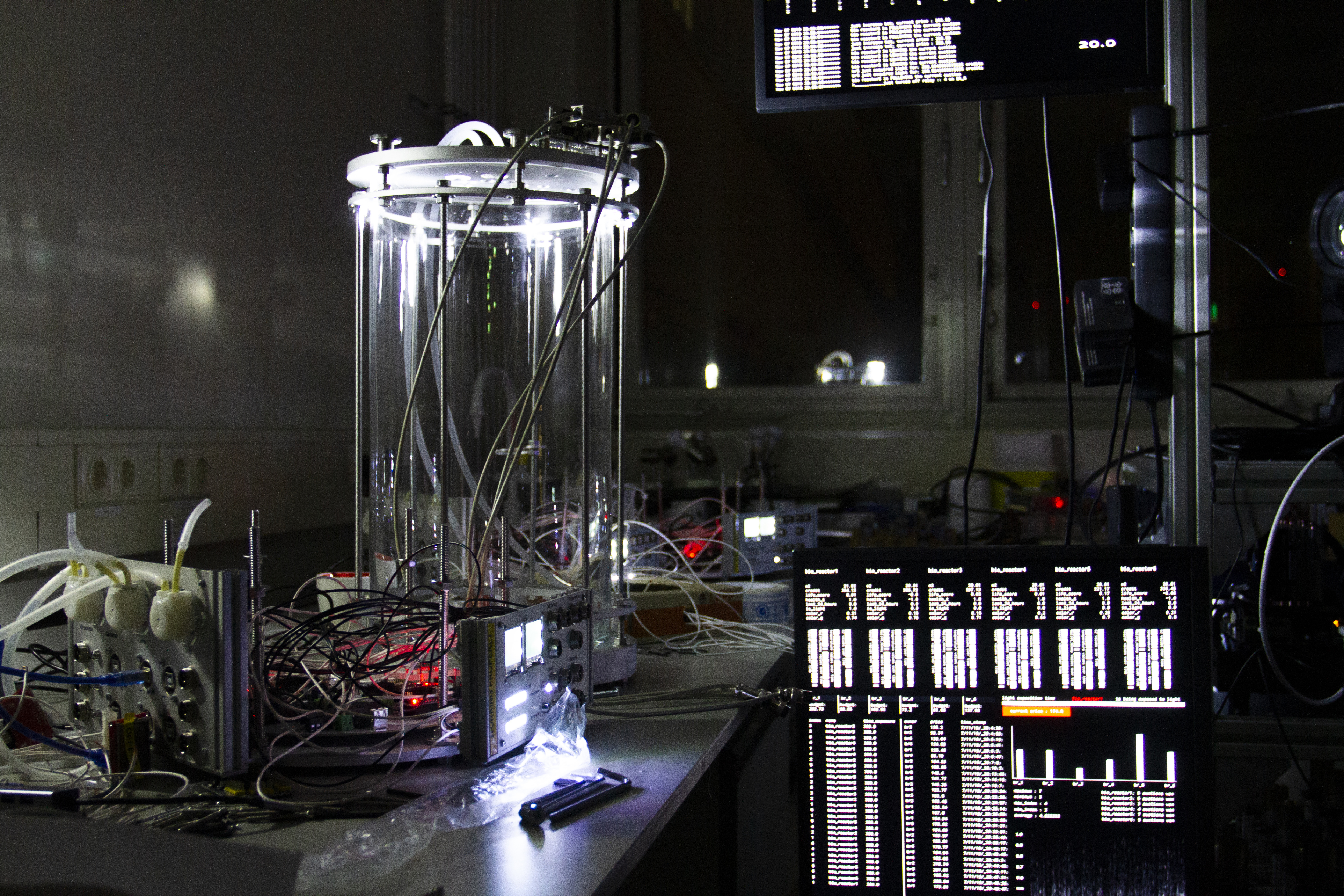
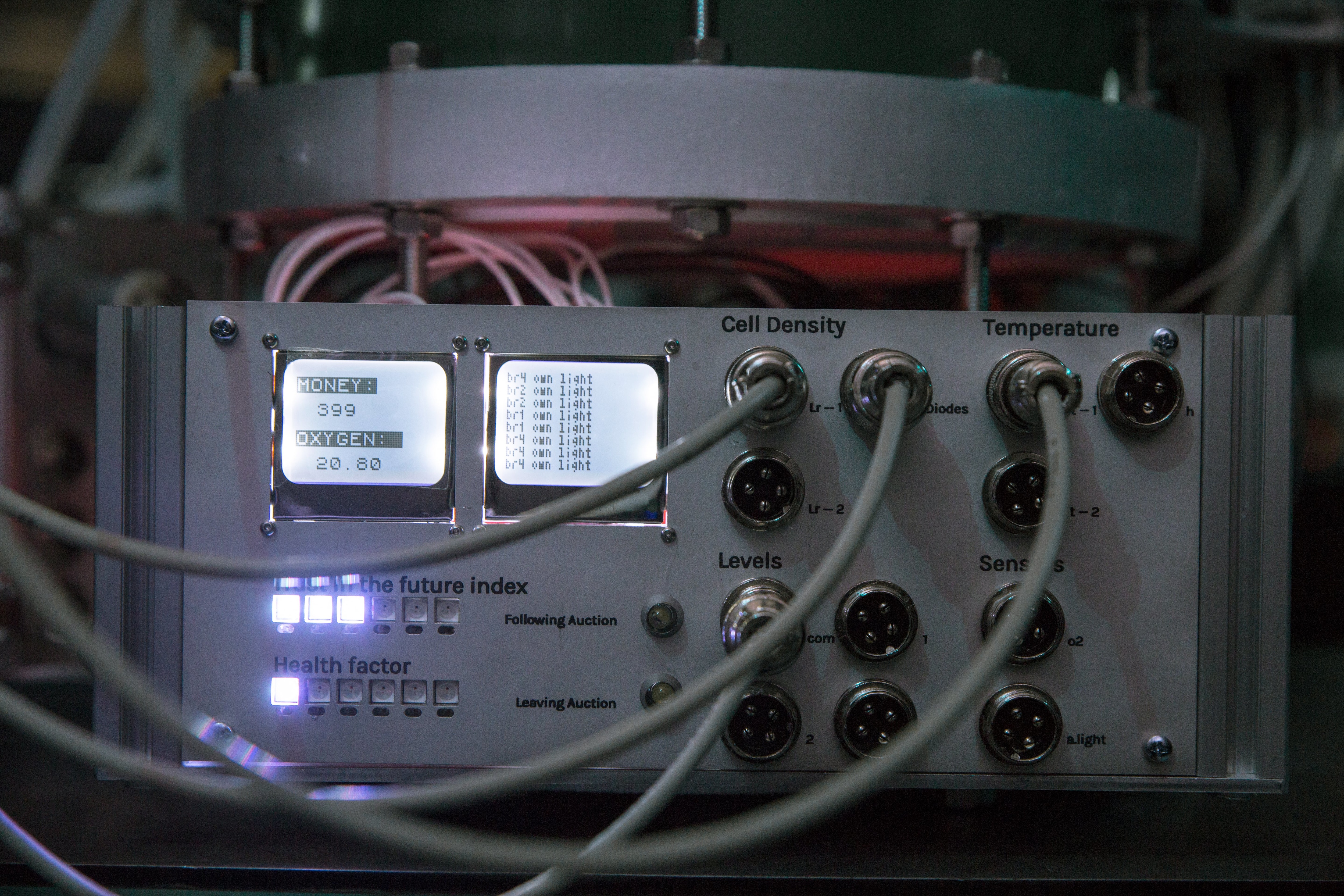

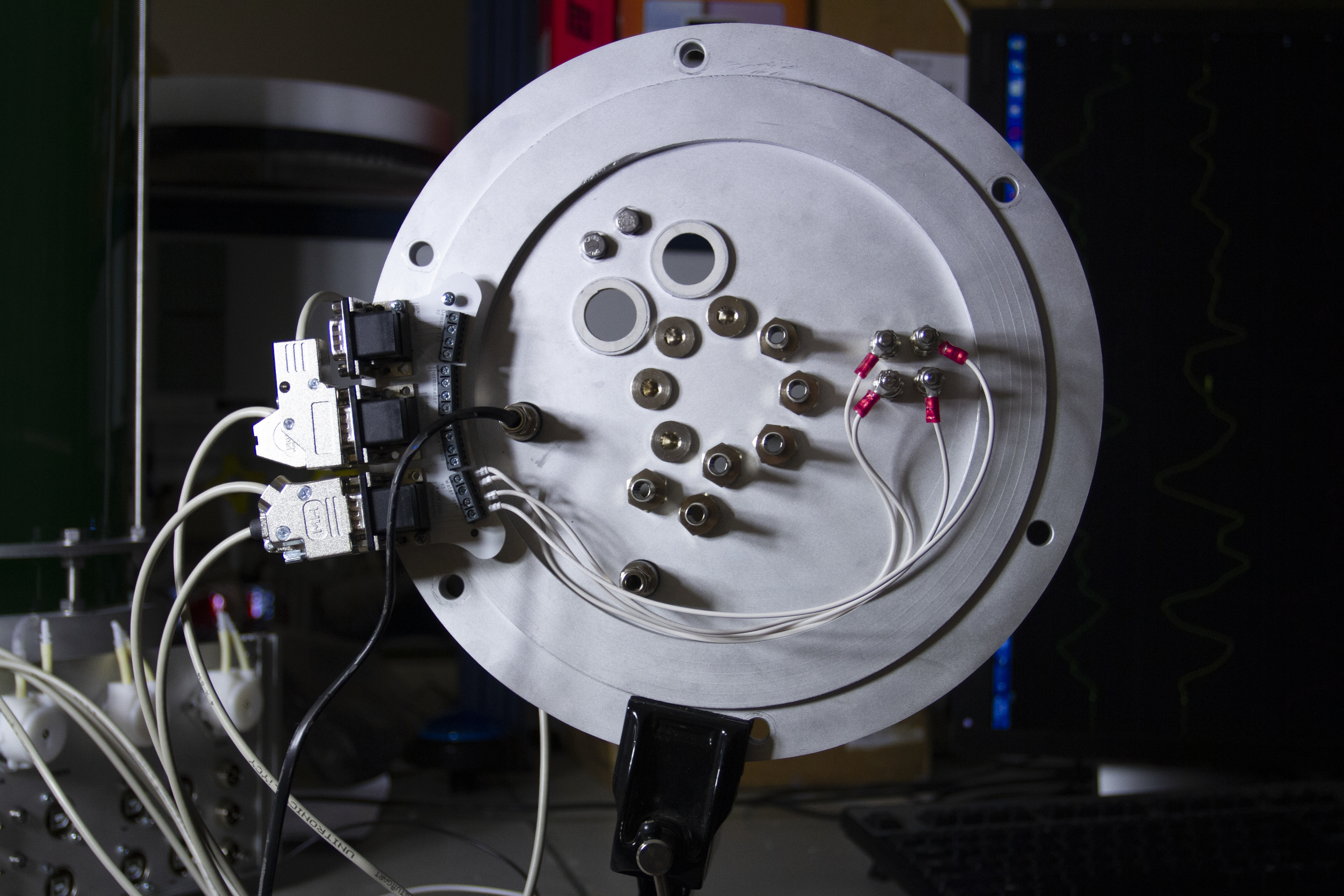
The parts compounding CMD, from the custom made sensors we used to the design of the software, are all questionable as their material reality relies on design choices made or induced by the process of making them and our ambition when designing the project.
On top of the variables modulated by the genetic algorithm are these material constants that get expressed through data collection and processing, and that, ultimately, will be part of the decision-making process.
This tension between the politics of ideas and the ones of the materials is inherent in the thought process behind CMD.
On top of the variables modulated by the genetic algorithm are these material constants that get expressed through data collection and processing, and that, ultimately, will be part of the decision-making process.
This tension between the politics of ideas and the ones of the materials is inherent in the thought process behind CMD.

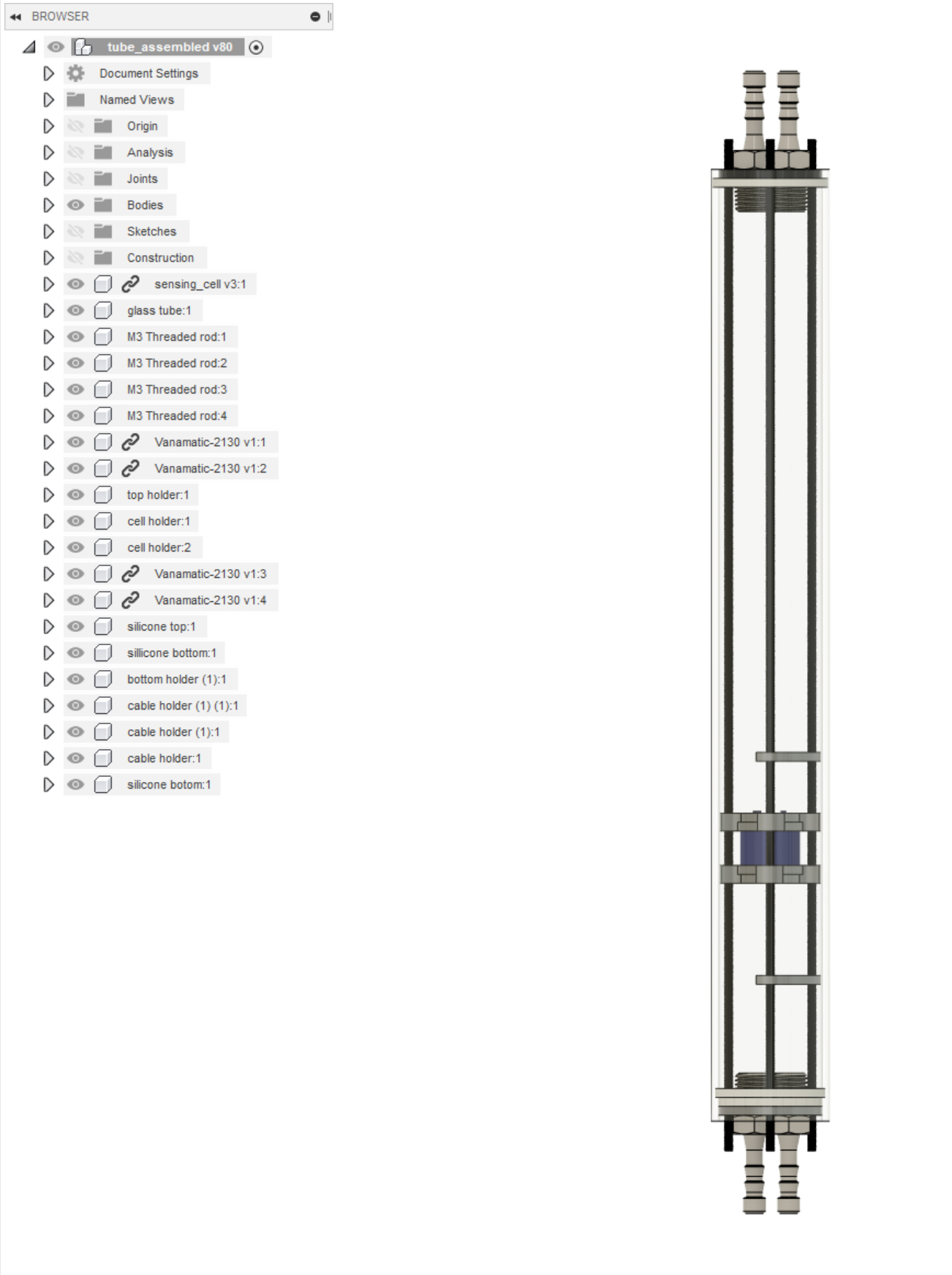
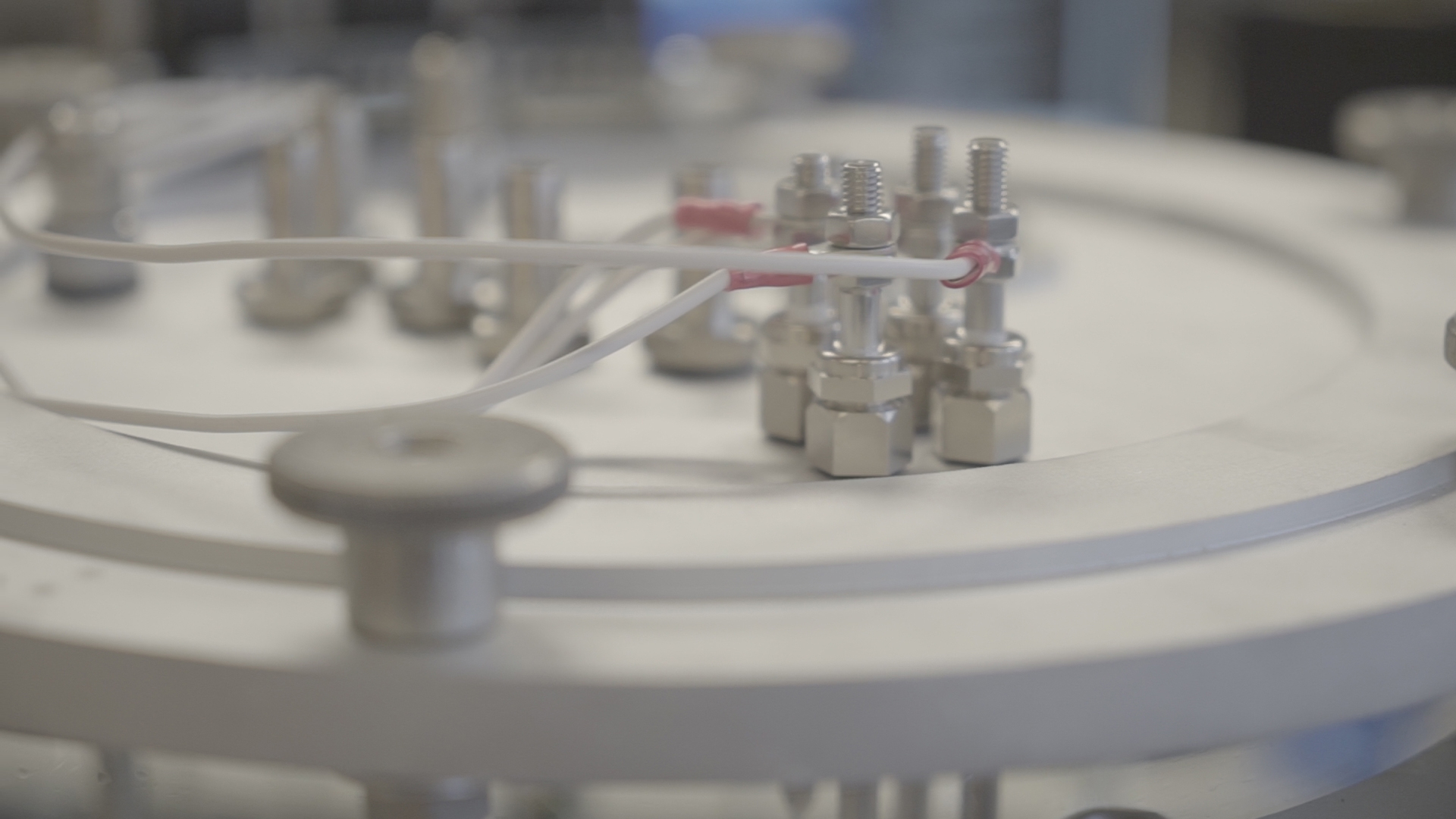

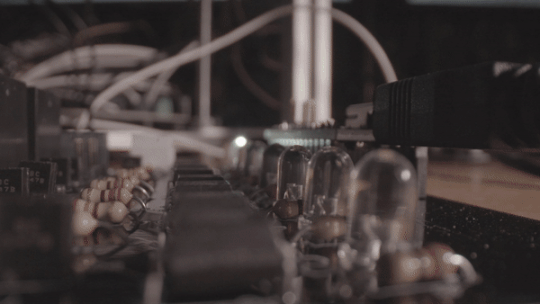
CMD is to be seen as an experimental setup where the initial conditions were designed to allow an automated data collection process informing a machine learning setup (a genetic algorithm). This learning process is currently occurring at Mu Hybrid Art House where the project is exhibited. More information about the convergence of the algorithm and the data collection will follow in the next weeks.
RATIONAL:
As information technologies get embedded in our everyday life, the increasing complexity of the entangled networks drive emergent properties of these infrastructures that get translated into political agendas (Bratton, 2016).
The performance of these systems relies on the collection of ever more and more precise datasets abstracting life, social interaction and economy into information points. As we get embedded in this self informing feedback loop, our perception of reality, as well as our agency on it, is hardcoded in the system’s rules (Deleuze, 1992; Baudrillard, 1994; Scott, 1998).
The rapid breakthroughs of synthetic biology in the last two decades (From the end the Human Genome Project, 2003 project to CRISPR-Cas9, 2014) has steered the field toward questionings extremely close to the one encountered through digitalism problematics (Calvert, 2012). The existence of Bio-Hacking community and the patenting of genomes as software (Venter, 2010) made us question the nature of life and its relationship to Information.
While recent developments in biological computing redefine the material nature of computation by trading silicone based hardware for carbon-based designs (Adamatzky, 2016), cybernetic forms of control are now getting incumbent to biological processes.
This new status quo granting non-human entities agency over political, economic and ecological systems at an unprecedented speed urge the need to establish design and cultural frameworks for biological machines
If humains are deeply technological and technology is part of our nature(D. Harraway, 1985) then our tools are cultural and material extensions of ourselves. The anthropocenic condition has proven that former design paradigm was driven by human first problematics often disregarding their impact on ecosystem. A post anthropocenic view on that going beyond the human centric should look at the way evolution occurs in ecosystem, hence, creating an evolutionary design paradigm. Cmd is feeding on the data collected on these artificial ecosystem to inform a genetic algorithm designing the rules of the software structuring the interactions among these proto-societies
As information technologies get embedded in our everyday life, the increasing complexity of the entangled networks drive emergent properties of these infrastructures that get translated into political agendas (Bratton, 2016).
The performance of these systems relies on the collection of ever more and more precise datasets abstracting life, social interaction and economy into information points. As we get embedded in this self informing feedback loop, our perception of reality, as well as our agency on it, is hardcoded in the system’s rules (Deleuze, 1992; Baudrillard, 1994; Scott, 1998).
The rapid breakthroughs of synthetic biology in the last two decades (From the end the Human Genome Project, 2003 project to CRISPR-Cas9, 2014) has steered the field toward questionings extremely close to the one encountered through digitalism problematics (Calvert, 2012). The existence of Bio-Hacking community and the patenting of genomes as software (Venter, 2010) made us question the nature of life and its relationship to Information.
While recent developments in biological computing redefine the material nature of computation by trading silicone based hardware for carbon-based designs (Adamatzky, 2016), cybernetic forms of control are now getting incumbent to biological processes.
This new status quo granting non-human entities agency over political, economic and ecological systems at an unprecedented speed urge the need to establish design and cultural frameworks for biological machines
If humains are deeply technological and technology is part of our nature(D. Harraway, 1985) then our tools are cultural and material extensions of ourselves. The anthropocenic condition has proven that former design paradigm was driven by human first problematics often disregarding their impact on ecosystem. A post anthropocenic view on that going beyond the human centric should look at the way evolution occurs in ecosystem, hence, creating an evolutionary design paradigm. Cmd is feeding on the data collected on these artificial ecosystem to inform a genetic algorithm designing the rules of the software structuring the interactions among these proto-societies
The mechanical productions of the pieces composing the bio reactors has been produced in my workshop in Paris and assembled in the Hybrid Form Lab
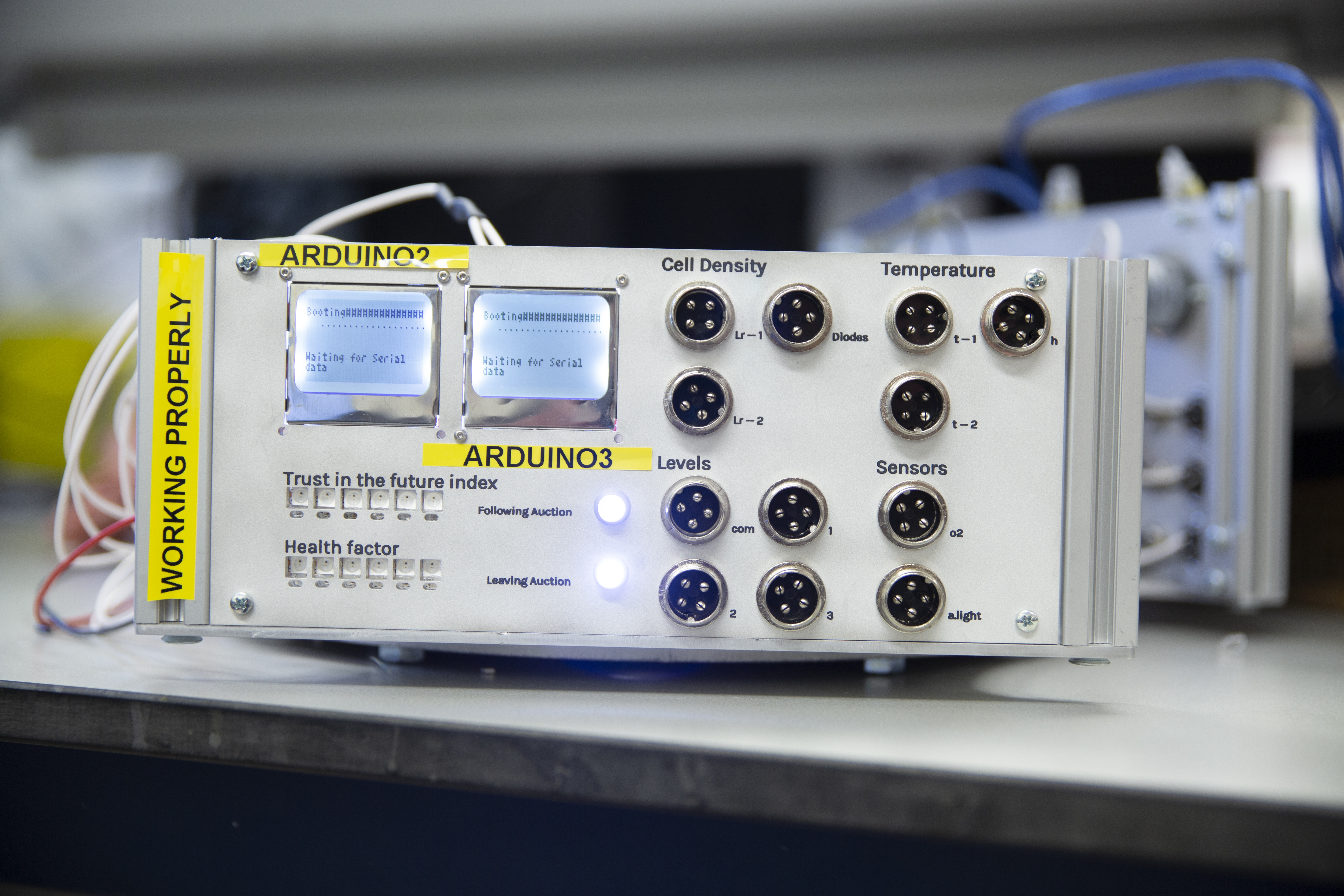
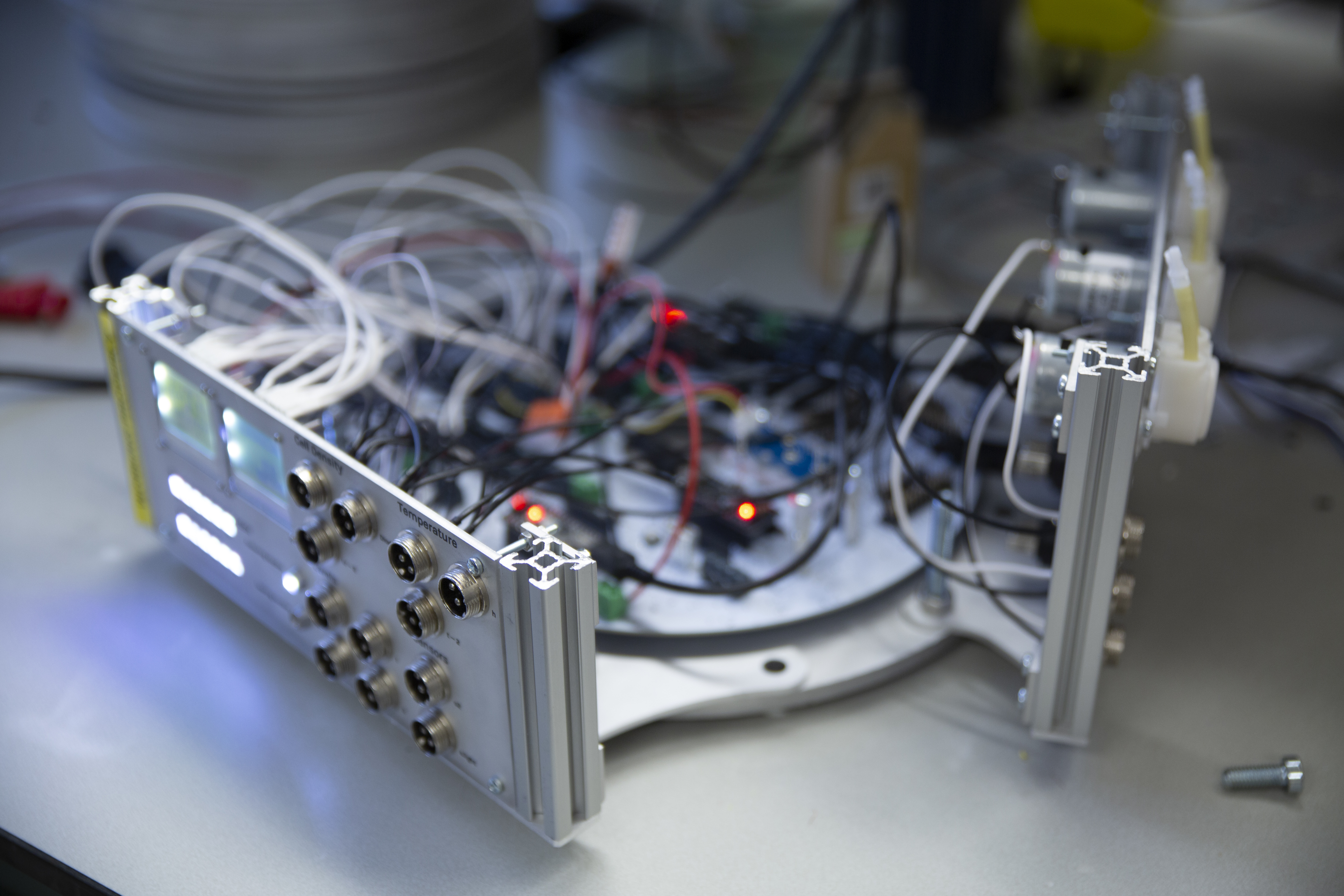
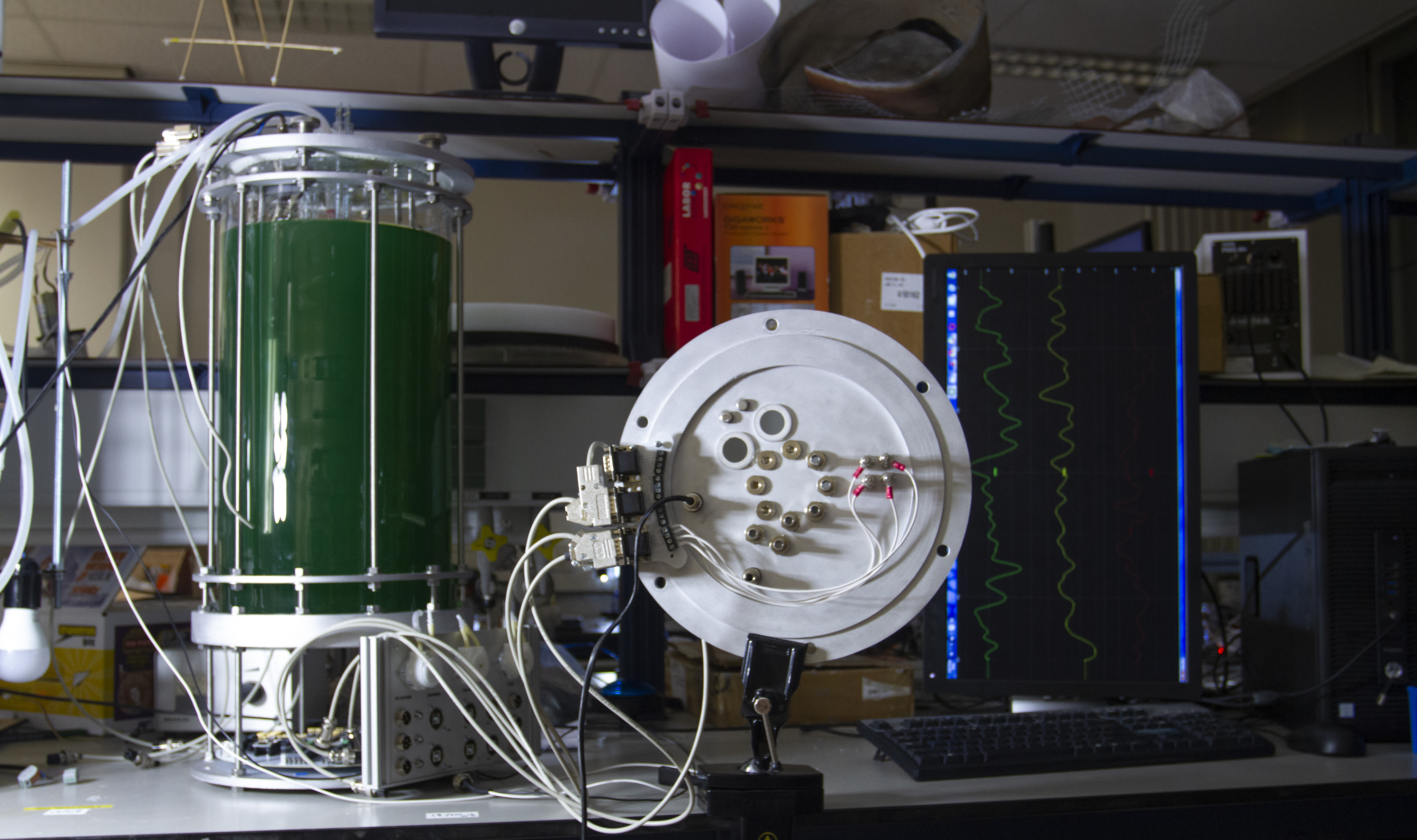


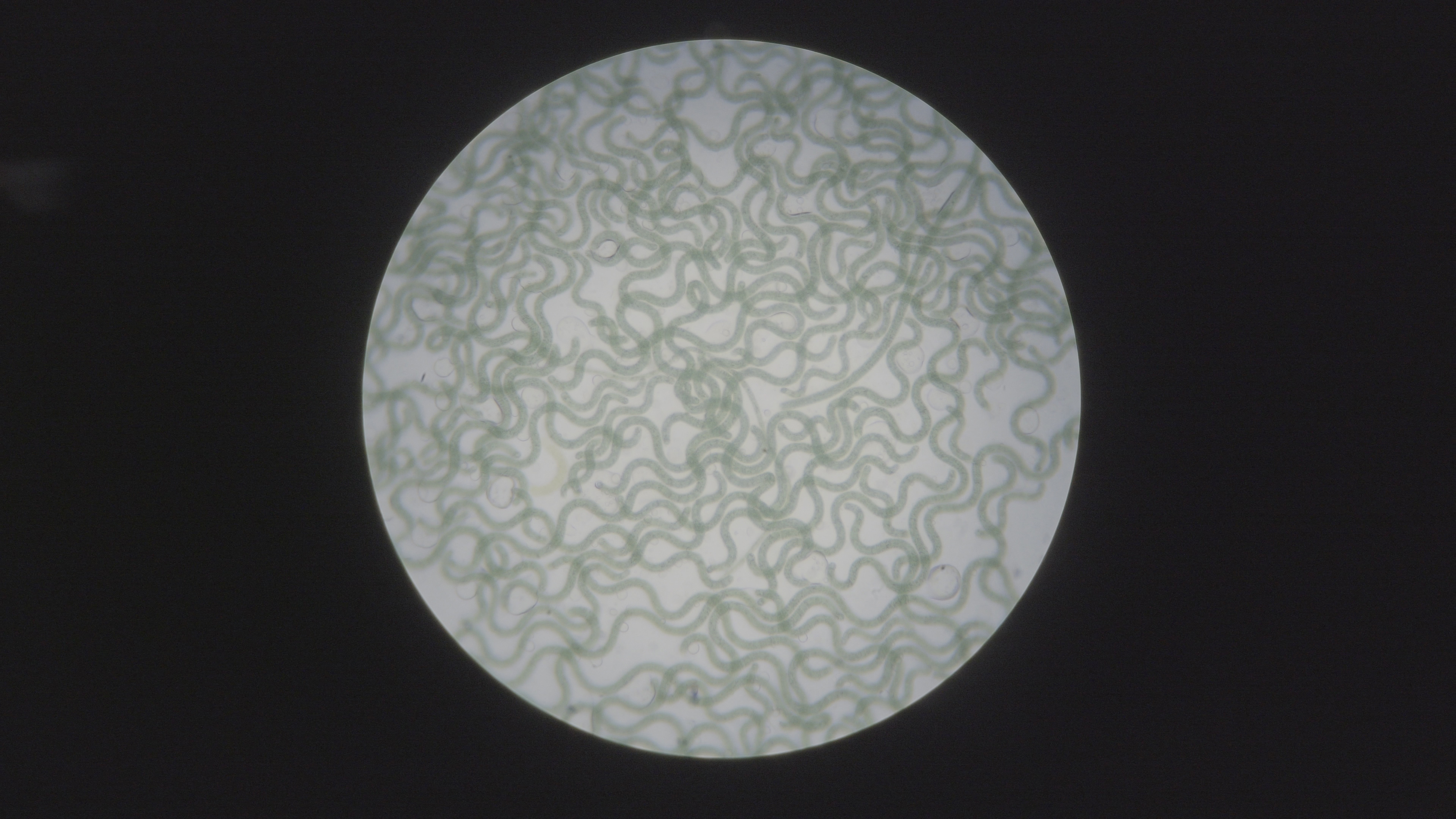
CMD2.0 as part of Evolutionaries@ MU Artspace
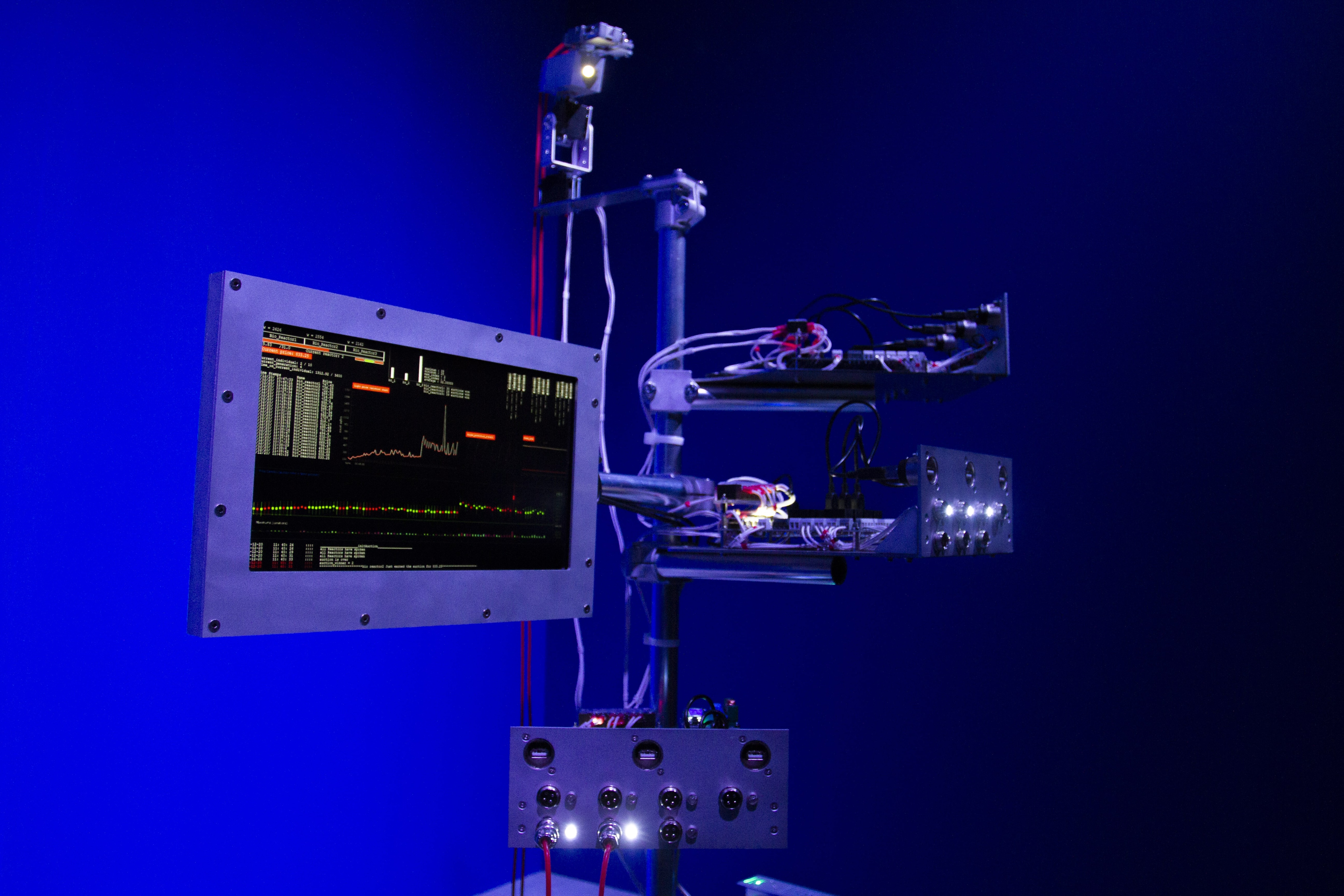
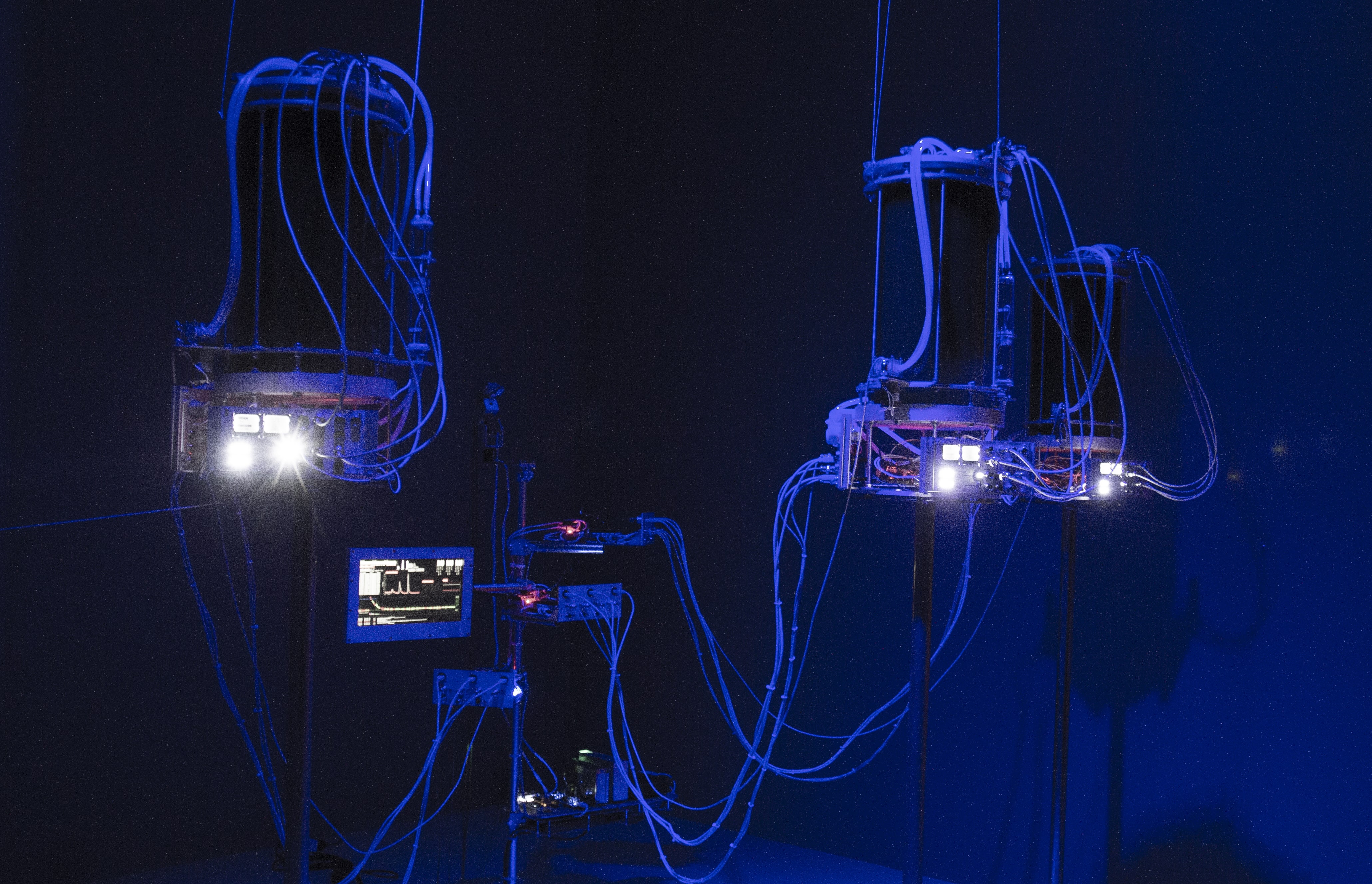

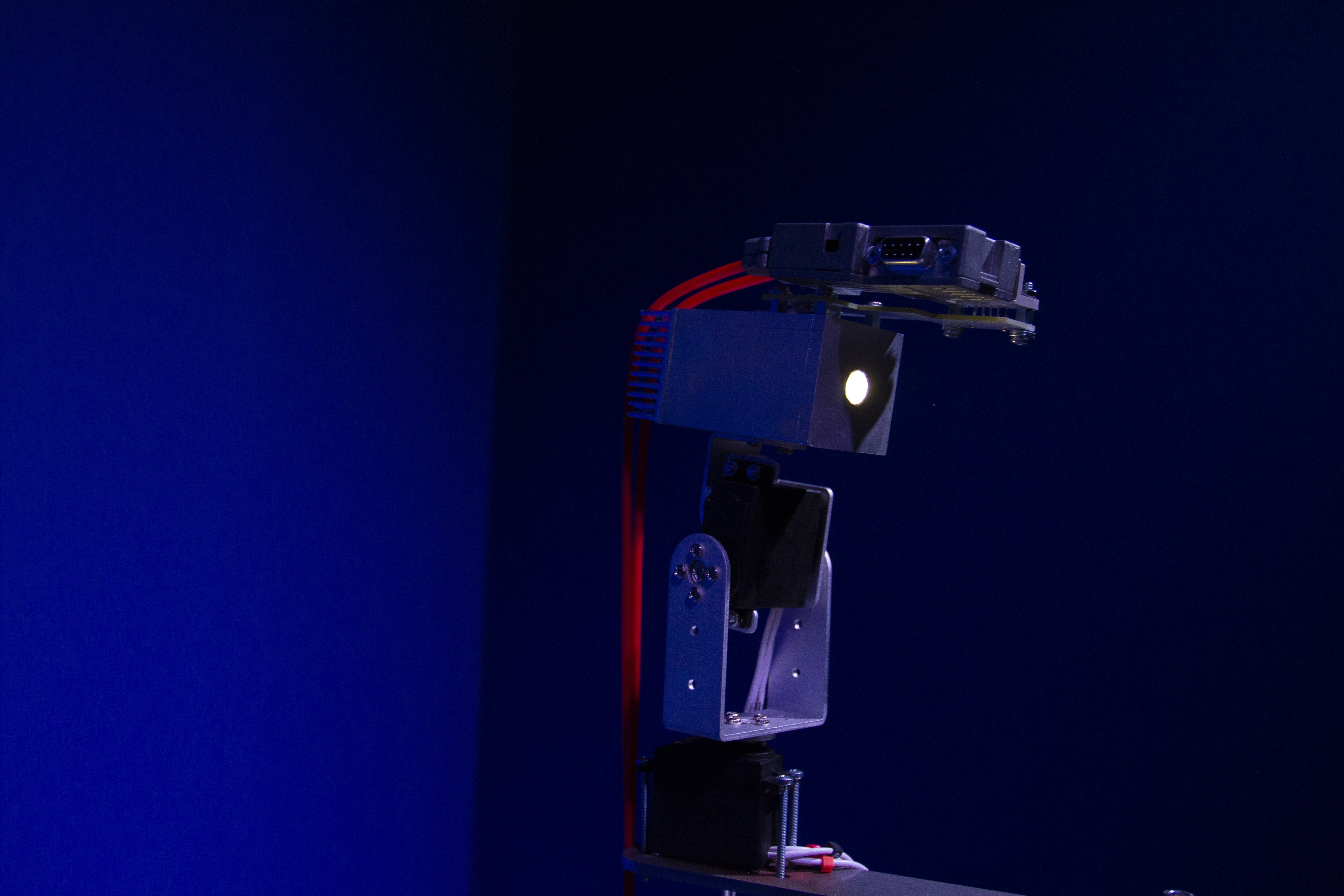
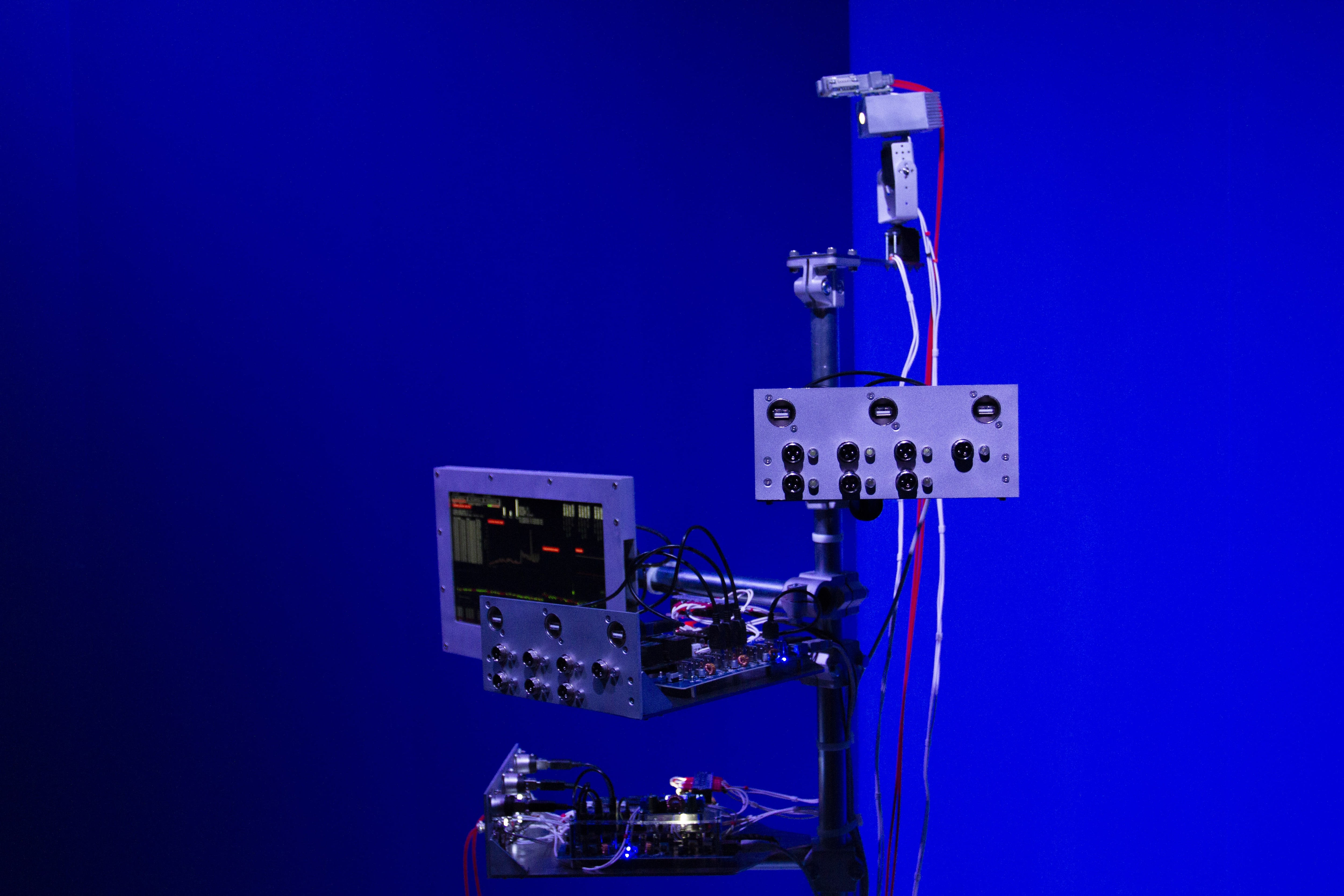

Selected Press:
Neural, 66, State of Emergency
Sci-Art Magazine, Algorythmic, June 2020
Creative Application Network
MU Tv
Arshake
Sci-Art Magazine, Algorythmic, June 2020
Creative Application Network
MU Tv
Arshake
Credits & acknowledgement:
Concept and production: Michael Sedbon
Collaborators: Bio-physics of photosynthesis & Hybrid Forms Lab (VU)
▒▒▒▒▒▒▒▒▒▒▒▒▒ Raoul Frese(VU)
▒▒▒▒▒▒▒▒▒▒▒▒▒ MU Hybrid Art House
Technical Support: Sandrine D'Haene & Manu Alfonso Soler
▒▒▒▒▒▒▒▒▒▒▒▒▒ Alexander Lambertz & Mees Dieperink
On-site production & coordination: MU Hybrid Art House
Collaborators: Bio-physics of photosynthesis & Hybrid Forms Lab (VU)
▒▒▒▒▒▒▒▒▒▒▒▒▒ Raoul Frese(VU)
▒▒▒▒▒▒▒▒▒▒▒▒▒ MU Hybrid Art House
Technical Support: Sandrine D'Haene & Manu Alfonso Soler
▒▒▒▒▒▒▒▒▒▒▒▒▒ Alexander Lambertz & Mees Dieperink
On-site production & coordination: MU Hybrid Art House
Early prototypes done at Maker Bay Hong Kong with the help of Mike Yuen Chun Kwong
Video: Maison Mimesis
Music: Alva Noto - Uni Sub
French spirulina partner: Spiruline Haut de France
This project has been produced as part of the Bio Arts and Design Award 2019
It was exhibited at MU Artspace, Eindhoven, NL as part of the Polarities show (29th of November 2019 to March 1st 2020)
Video: Maison Mimesis
Music: Alva Noto - Uni Sub
French spirulina partner: Spiruline Haut de France
This project has been produced as part of the Bio Arts and Design Award 2019
It was exhibited at MU Artspace, Eindhoven, NL as part of the Polarities show (29th of November 2019 to March 1st 2020)